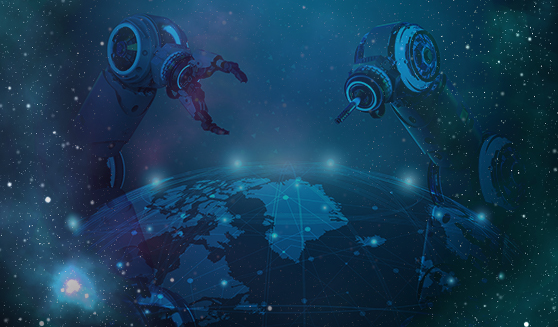
With emerging technologies such as robotics and artificial intelligence, the current business landscape is rapidly changing. But, although automation helps streamline the process of an organisation, how will it impact the labour market? Will robots take away our jobs?
We are fully aware of the rapid technological advancements that are taking place globally. The use of technology such as artificial intelligence is supporting businesses in automating tasks that humans previously performed. As a result, there are many use cases where automation is applied, such as for repeated operations like medical claims processing or physical robots that conduct order fulfilment in warehouses.
According to Gartner, the worldwide market for technology that enables hyper-automation will reach $596.6 billion in 2022. This is up from $481.6 billion in 2020.
“Hyperautomation has shifted from an option to a condition of survival,” said Fabrizio Biscotti, research vice president at Gartner, in a statement. “Organisations will require more IT and business process automation as they are forced to accelerate digital transformation plans in a post-Covid-19, digital-first world.”
So, what exactly is hyper-automation?
Gartner explains that hyper-automation is an approach that enables organisations to identify rapidly, vet and automate as many processes as possible using technology, such as robotic process automation, low-code application platforms, artificial intelligence and virtual assistants. These tools are considered process-agnostic software, meaning that they can be used in any organisation across multiple IT and business use cases. In addition, other software used to automate more specific tasks such as ERP, supply chain, and CRM systems will also contribute to the market’s growth. In short, hyper-automation helps streamline the entire process of an organisation. Industries that will benefit from hyper-automation include retail, healthcare, public sectors, finance and tourism.
Hold on…… does this mean hyper-automation is here to take away our jobs?
According to the Future of Jobs 2020 report by the World Economic Forum, automation and a new division of labour between humans and machines will disrupt 85 million jobs globally in medium and large businesses by 2025. Furthermore, with the increase of digitisation at workplaces, roles in data entry, administration, accounting are decreasing demand.
However, as the economy and job markets evolve, automation is expected to generate new jobs and profiles instead of slash them. Around 97 million new roles will emerge across the economy; in the fourth industrial revolution, technology industries like artificial intelligence and content creation fields, states the Future of Jobs 2020 report.
Some of the roles that may gain traction in this field are –
Artificial intelligence and/or Machine learning engineer: This position will be in charge of selecting the optimal models for training automation systems as well as ensuring that the systems work successfully. They will also need to train the models using a variety of test scenarios to automate the process in any circumstance.
Developers and robotic process automation developers: Developers will be in charge of creating intelligent robots or software on many platforms. They will also be responsible for programming wherever it is necessary inside the automation environment. Meanwhile, robotic process automation experts will concentrate on creating software bots that can automate certain jobs.
Automation architects: This position will be in charge of designing the automation process as well as overseeing operations. The architects will also need to guarantee that the various components follow the rules and achieve the desired results throughout the multiple stages of the automation lifecycle.
Career development and employee upskilling
Employees who want to work in automation will need to reskill in robotic process automation and artificial intelligence. Despite the present economic slump, most firms understand the need of reskilling their employees and are in support of it. According to the Jobs 2020 report, 66 per cent of employers surveyed expect to see a return on investment in upskilling and reskilling their current employees within one year.
“In the future, we will see the most competitive businesses are the ones that have invested heavily in their human capital – the skills and competencies of their employees,” said Saadia Zahidi, managing director, World Economic Forum, in a statement.
Because automation is no longer limited to IT, every business user can become an automation leader within their own department, helping both tech- and non-tech-savvy personnel.








